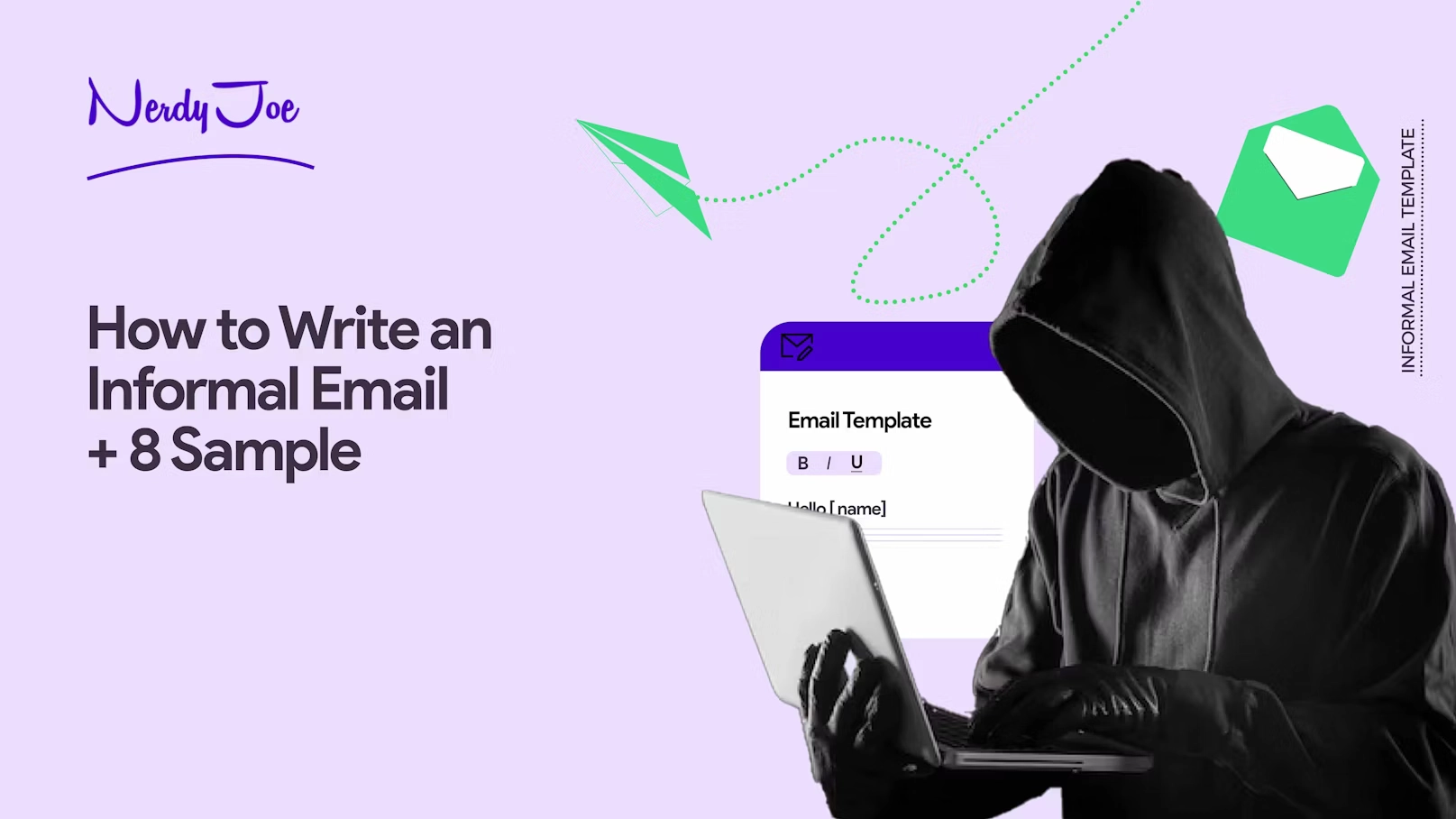So, how long should cold emails be?
Well, if you’re a long-time reader of our blog, you know that we (almost all the time) hold a contrarian stance when it comes to the way most people in the cold email and outbound industry alike run their campaigns.
- Create a billion domains;
- Send a trillion emails per day and get ten replies;
- Write overly generic emails out of templates and blast them out to your contact list;
Literally, spam everyone in your industry until you run out of data. To be fair, the industry would be fine if these were the only pains it’s struggling with. Over the past few months, social media platforms have been flooded with what we call at Nerdy Joe, “cold email rocket scientists.”
A cold email rocket scientist is someone who has absolute knowledge when it comes to cold email, so much so that they’re sharing their playbook — the commandments of cold emails if you want.
You’re probably familiar with some of these commandments:
- The best subject line ever is “quick question”, or your cold email subject line should be 4 words;
- Your cold email should be no more than 3 paragraphs;
- The best cold emails have no more than 140 words;

So, at Nerdy Joe, we made a list of these commandments and decided to test them. Not necessarily to prove them wrong but rather to make a point that no strategy is and should never be one-size-fits-all.
And of all the sales tactics out there, cold email should be the least reliant on “proven playbooks.”
For instance, more and more people started controlling their spending over the past two years. So, how you sold during COVID is not gonna work now. And likewise, tactics that work now won’t after the recession because habits will change.
So, in today’s case study, we’re building the case against the commandment that says, “Your cold email should be no more than 3 paragraphs,” or “The best cold emails have no more than 140 words.”
Note: Struggling to get results from your cold emails? Well, we’ve cracked the code for getting positive replies from cold email campaigns and we can fill your calendar with 3 -5 meetings every week. Book a consultation here.
Common beliefs when it comes to cold email length
There seems to be a universal consensus on the fact that the best-performing cold emails have between 50 and 125 words.
At least, that’s what you can find on the Klenty blog.
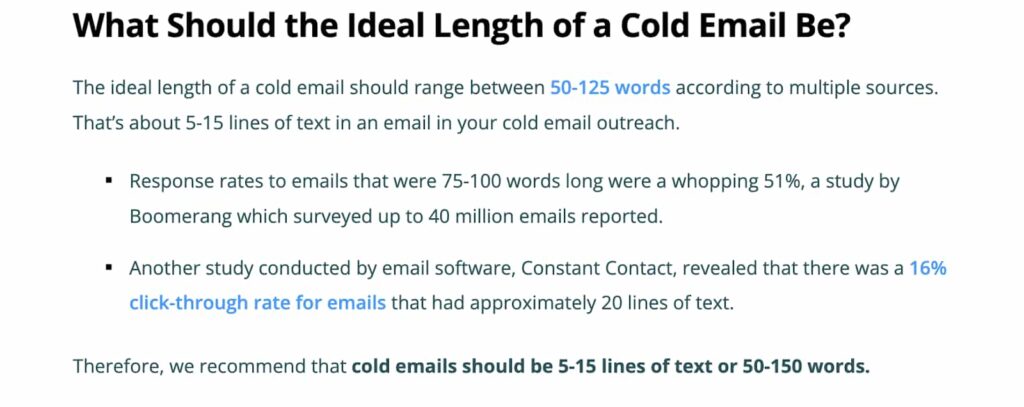
The Woodpecker blog.

And the Hubspot blog.

Experts like Josh Braun, who we really respect at Nerdy Joe, even suggest fewer words, recommending salespeople to stay between the 30 – 50 word count range.
Usually, these emails have a maximum of 3 lines and are short and sweet.
Outbound experts like Chris Orlob went even further in their research and suggested you keep your cold email in F-shape.
That means maximum 3 paragraphs and shorter sentences.
Here’s an example
“Hey {First name},
Listened to your podcast with Joe Rogan the other day and was fascinated with your GTM approach. We used the same exact playbook at Pied Piper and hit $100M ARR.
Now, we help companies boost revenue by implementing this playbook.
Want to hear more?”
Not so obvious? Look at this picture.

F-shaped cold email, everybody!
By the way, this email is 47 words long.
At this point, I’m sure you’re wondering… but Ernest, what do you have against this way of writing emails?
Well, nothing. Like really. But we tried sending longer emails and actually got great results from it.
What we found from sending 100k+ very long cold emails at Nerdy Joe
We actually decided to experiment with sending long-form cold emails for some of our clients. By very long emails, we mean 11-paragraph-long emails. And the results were great.

First thing first, after our initial test, meaning after seeing the first results from the first campaign, we actually decided to change the industry and see if the results would be the same.
And it turned out that….
… the results remained the same.
So, what did we do?
We ran that test for a client who’s in the HR software niche. Basically, their software helps companies better manage their C-levels, use data to make decisions and solve misalignment issues before it requires the intervention of a corporate coach.
Their target audience, as you would have guessed, is HR directors, Chief Operating Officers, or sometimes CEOs.
When we onboarded that client, we felt that:
- The tool was so comprehensive that summarizing what it does in 2 sentences is unfair.
- Some of the features are very great, but they are just add-ons. None of these features would work as standalone products. So that means it’d be hard for the recipient just to know the value of the software if your email is only talking about one of the features.
- Some companies are juggling different tools to accomplish what our client’s tool does in one platform. So, keeping the email short and only mentioning one of the features would make our client’s software look like “yet another XYZ competitor.” When in fact, we’re selling an all-in-one tool.
So, in regard to all of this, we decided to take risks and make the cold email copy as long as needed. As I wrote that copy, my goal was to list all the features instead of compromising on some features for the sake of word count.
Here’s what that email looks like:

We started by addressing the elephant in the room, which is… most companies are losing money to shiny resumes. And it doesn’t only cost them the salary of the employees but also corporate coaching fees, team building activities, and employee engagement programs.
Then, we made it clear how our client’s tool addresses this issue before it even happens. And we consolidate our point with bullet points highlighting the major features of the platform.
Then, we ended the email with a clear and no-risk offer and asked people to suggest team members they want to assess using our free trial.
As you can see, we’ve written it almost as if it were an email sent to actual subscribers. And do you realize how long the email is? Most gurus recommend an email of no more than 70 words.
Did you also notice that at the end, we didn’t mention that we wanted a meeting? And that we inserted a picture in the email?
None of this is recommended.

We received tons of responses like this because our email, although we didn’t ask for an appointment, was clear and written in such a way that interested people needed to hop on a call ASAP.
And here’s how it went:

Now, you may say, “This is a random email, and you need to send it to a significant segment to draw conclusions.”
Fair point. And to your concern, we did play with it and sent it to different segment audiences. See for yourself:

And we didn’t stop there. We actually decided to try sending a similar email to another segment in a whole different industry.
This time, we sent it to a group of heads of content/CMOs because our client is a marketing agency.
Here it is.

As you can see, we almost used the same structure and length here as well.
- Started with a little personalization
- Then called out the elephant in the room, which is “It’s hard to get high-quality backlinks. And buying them is risky.”
- Then positioned our client as the ultimate solution
- Then backed our claims with a case study and with screenshots
- Then a low-risk offer.
And guess who was the first to reply?
Ryan Rob.
Yes, the ONE. Owner of www.ryrob.com and head of content at Close.

And plenty of other heads of content.
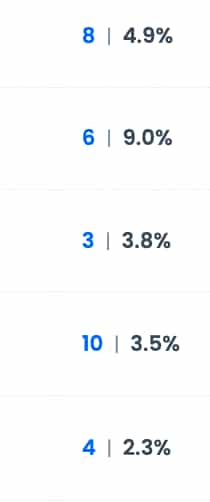
That’s a snapshot of the positive replies.
We also tried the same copy style with a different audience: solopreneurs in need of a designer. It worked well even though our head of lead generation, Andrew, thinks it’s very long.

Our process for writing long cold emails that convert
For the sake of being transparent, we are not saying everyone should start writing cold emails as if you’re writing a nurturing sequence to your email subscribers.
We recommend you test out different copy styles and double down on what works for your audience and offer. And that’s the whole point of every piece of content we create. We’re not spraying a playbook. We’re advocating for people to challenge the status quo and run their own tests based on their hypotheses.
Now, if you decide that you want to give long-form cold emails a shot, then here’s how we proceed to write lengthy cold emails that generate leads.
Define the problem your company solves
Good to know: Before we launch any cold email campaigns, we make sure that we have a clear understanding of our client’s product, offering, and audience.
That means we are heavy on audience research.
We usually start our research process by interviewing our clients and recording the interview.
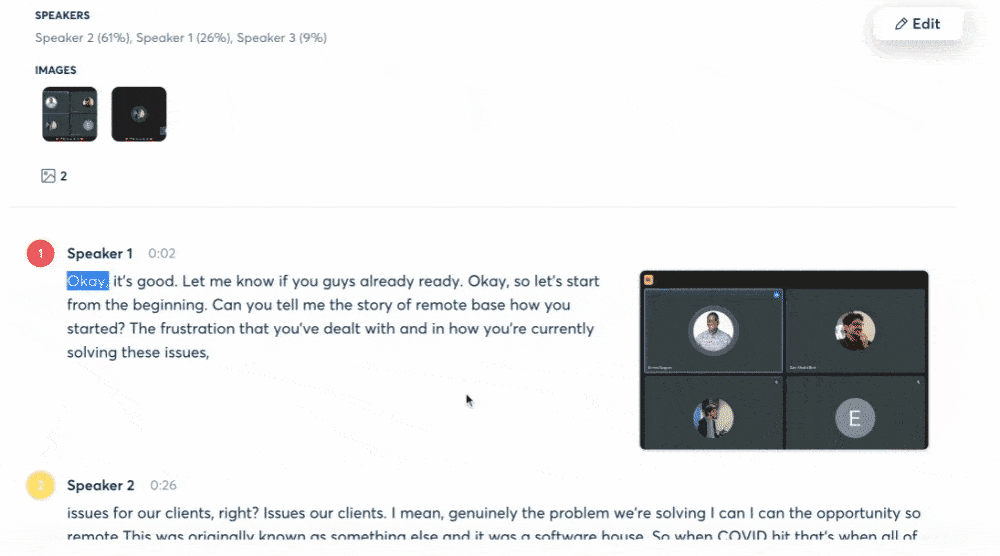
We then use the transcript of the recording to pinpoint the information we’re looking for. As for the information we don’t find, we use LinkedIn and SparkToro to find it.
And here’s how we structure our findings.
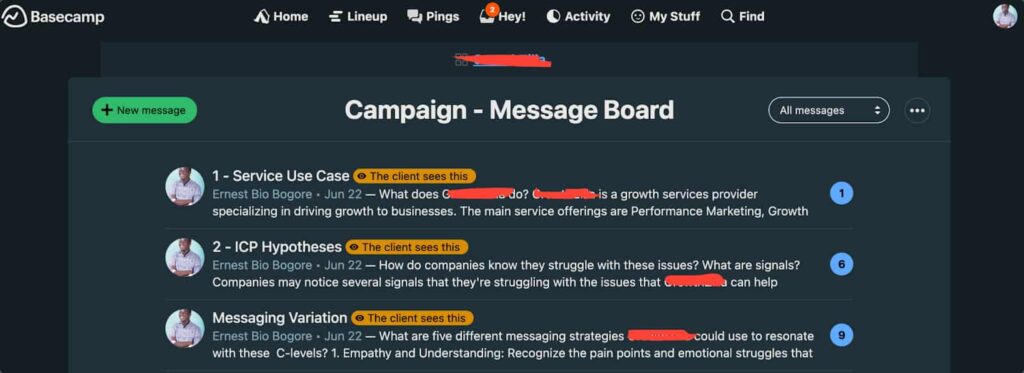
Basically, each thread is an aggregate of information about the client, what they do, how they do it, why they do it, and for whom they do it.
We start with what the client does.
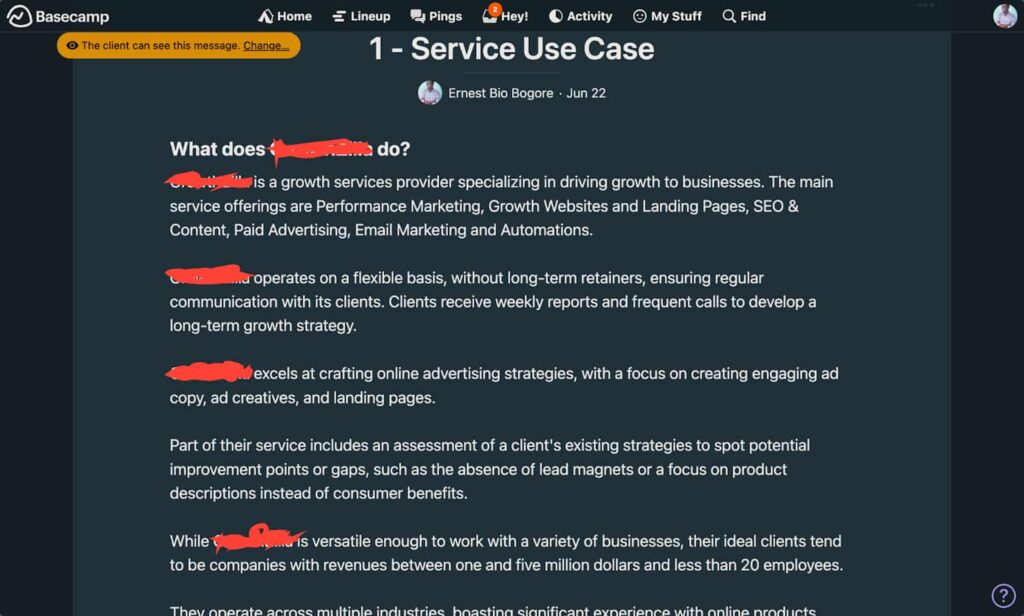
Then go granular on the pain points they solve.
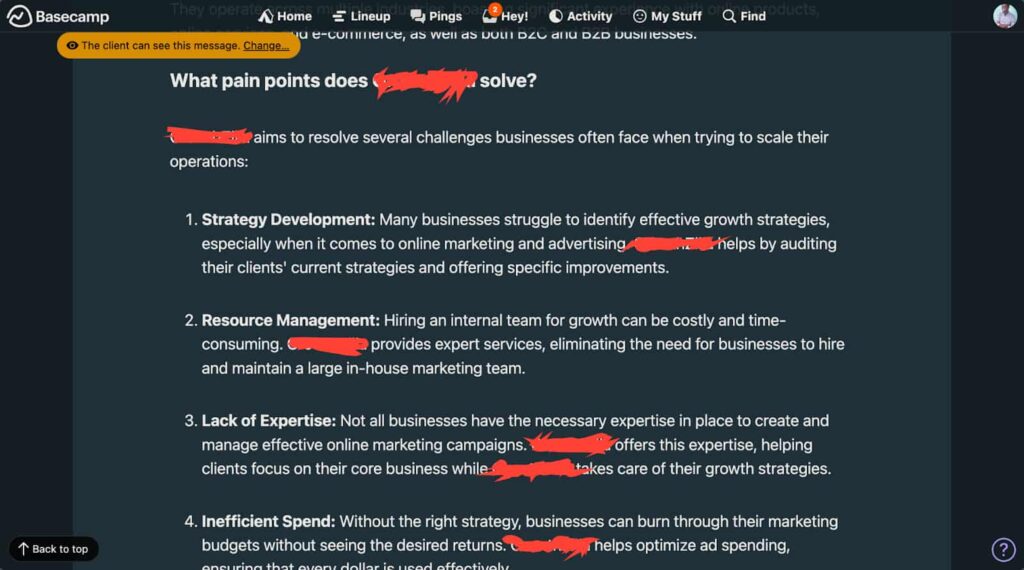
As you can see here, when put together, the bullets say….the client simply helps companies make the most of their current marketing efforts by bringing about efficiency and maximizing ROI.
Meaning, if you’re running paid ads, they will look into your current campaigns and optimize the results without increasing your ad spend.
Now that we found the problem they solve let’s find out who’s their target customers.
Identify who the C-levels to reach out to are
Most salespeople and even lead generation companies use silo-ed thinking to determine who the C-level to target should be.
For instance, for everything falling under the marketing umbrella, target the CMO, which makes sense to some extent. But depending on the size of the organization, the CMO handles different aspects of the business, and most decisions come down to the head of the vertical you’re operating in.
That means, sometimes, instead of targeting the CMOs, you should target the heads of growth, or the head of content, or the head of branding. Ultimately, these will form a buying committee together with the CMO that will decide to either buy or not.
But how do you find these decision-makers without falling prey to siloed thinking?
Well, we dig deeper into our client’s category and try to understand the moving parts of it. Which pain point has an incidence on the target company’s goal? How does not hitting these goals impact the overall sentiment? Etc.
Remember the pain points we found in the previous section? Well, we try to explain how most companies know that they have these pain points.

Once we find the signals that show a company has these pain points, we now try to understand how they solve these pain points, assuming they don’t know our client’s software or solution exists.
This helps you see what options they have on the table and how you can position your offer as a better alternative.
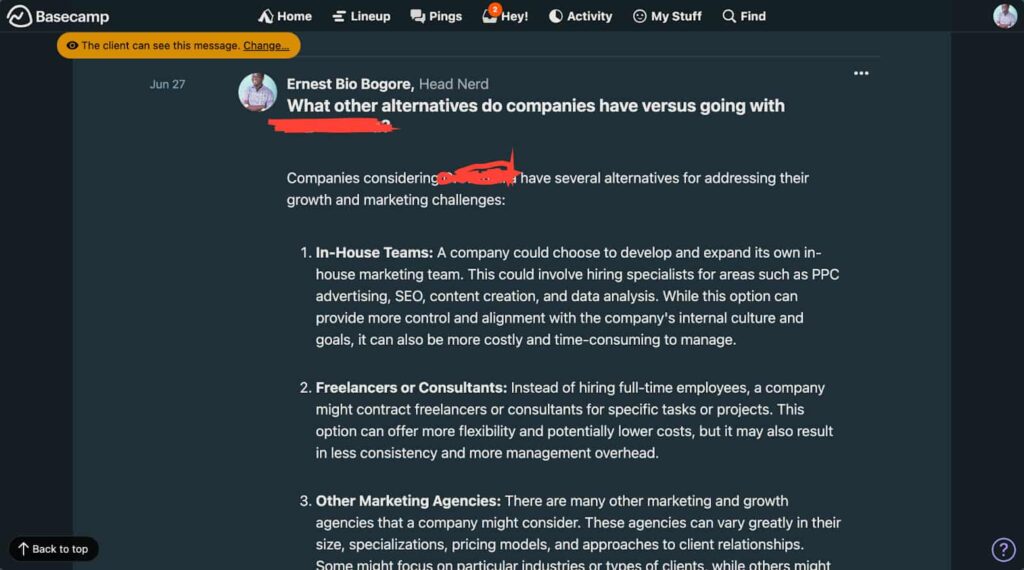
To solidify our understanding of our client’s offering, we determine what are the drawbacks of going each route.
Basically, if your company offers accounting software and most companies are using Excel to keep track of their books, it gives you an idea of how to better position your tool against Excel.

Finding alternatives to the solution you’re promoting also gives you an idea of the people who are potentially going to see value in your product.
For instance, if the company is using spreadsheets, then it means:
- They probably don’t have an accountant or bookkeeper (in this case, the CEO and head of marketing are handling the spreadsheet)
- They have an accountant, but they are old school and prefer spreadsheets. (In this case, the CEO and the accountant are handling the books)
So, instead of writing directly to the accountant, as the siloed thinking would suggest, you now have a group of people who form a buying committee. And you’re sure that you’re targeting at least of the decision-makers, and they can advocate for you internally.
In the case of our client, who has a marketing agency, here’s what the buying committee looks like.
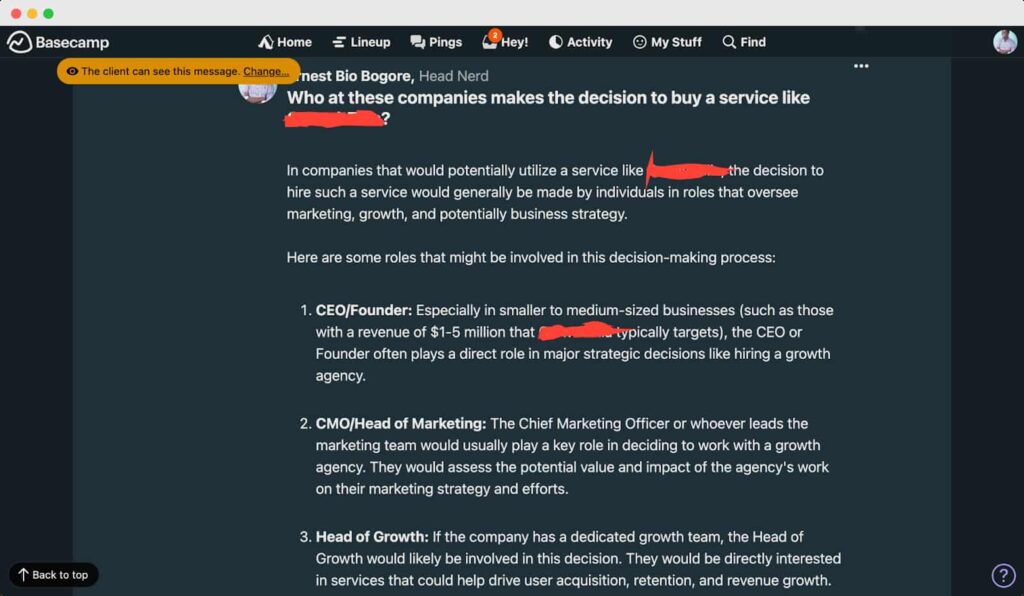
Correlate those problems with the KPIs these C-levels are evaluated on and clearly define the offer
After figuring out who the C-levels to target are, we now try to understand what messaging and words to use to get them to take action.
That starts with understanding what KPIs these C-levels are evaluated on. This helps us understand where their priorities are and where they’re allocating their budget.
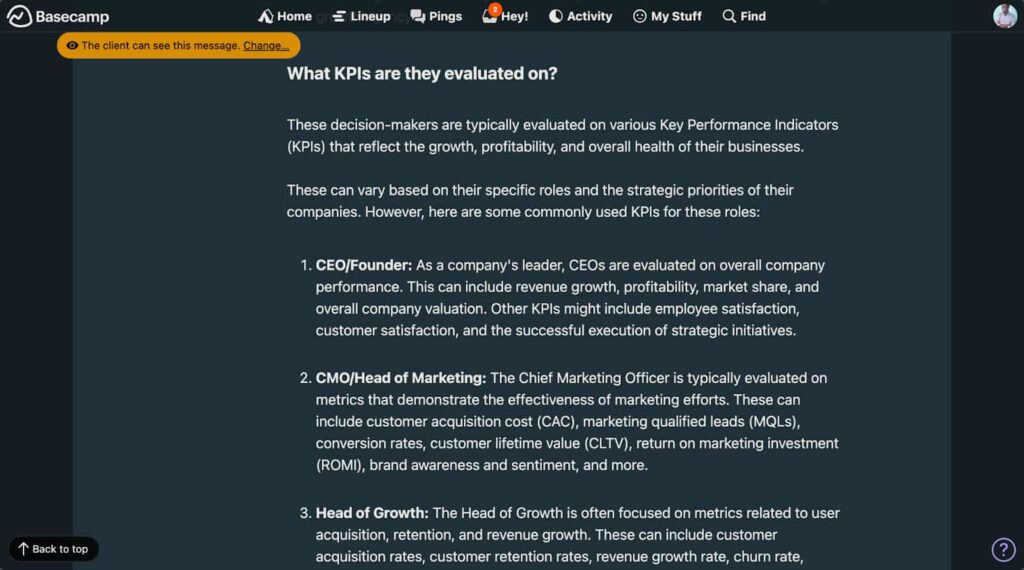
We then try to understand what are the obstacles preventing them, in most cases, from hitting their KPIs.
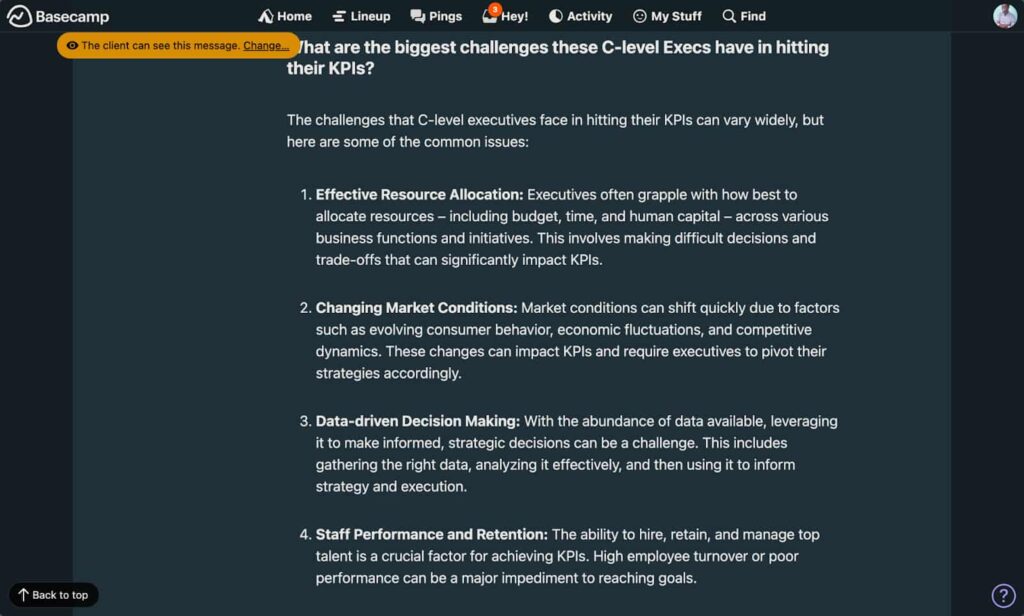
This is mostly important because it helps us understand the feelings these C-levels have when they miss their KPIs.
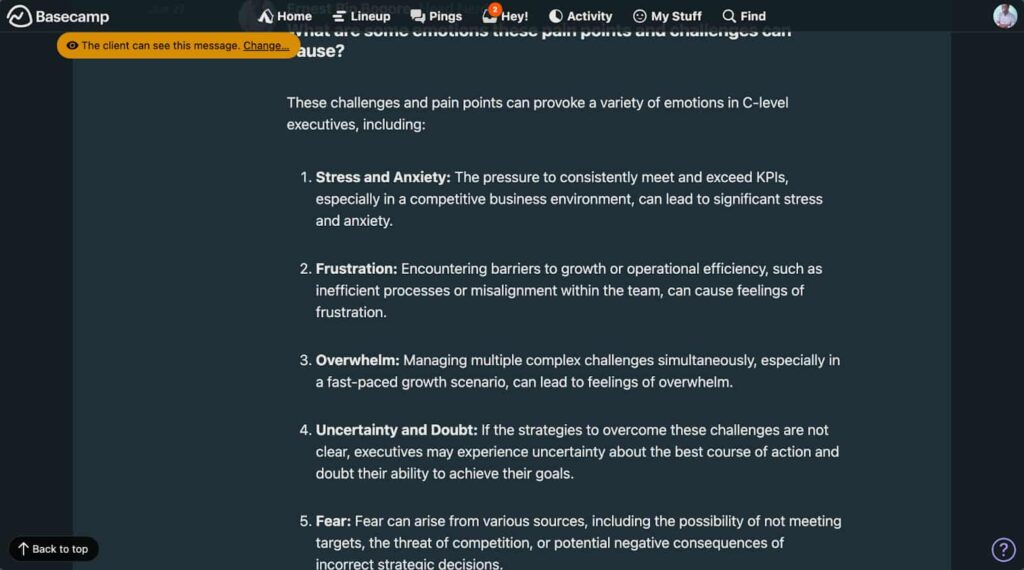
These feelings help when crafting the messaging, especially because you can use certain wordings and tap into some emotions to create FOMO.

And finally, write your long-form email copy.
We now have the following information about our client:
- What pain points do they solve,
- How do they solve these pain points,
- What type of companies to target,
- Who the buying committee is,
- What KPIs the C-levels in this buying committee are evaluated on,
- What prevents them from hitting these KPIs,
- What emotions does not hitting these KPIs trigger,
Work with Nerdy Joe to get the best cold email copies and generate leads
There you have it.
What we truly want you to understand is that the success of this approach doesn’t solely depend on the length of your cold email; it’s about the depth of research, understanding your audience, and tailoring the message with precision.
By investing the time to understand the specific pain points of your client, identifying the right decision-makers, correlating their concerns with their KPIs, and then crafting your cold emails creatively to evoke the right emotions, you set the stage for a compelling narrative that hooks them and get them interested in what you have to offer them.
For us, the emphasis shouldn’t be on the “long-form” but on the “relevant form”. It’s about ensuring that:
- our cold email subject lines are set to get the message receiver or the lead’s interest;
- we create a story that speaks volumes more than a generic pitch;
- every word in your cold email adds value and speaks directly to the reader’s concerns and needs;
- we offer deeper engagement and greater conversion potential;
So, if you’re ready to elevate your cold email game and open doors to opportunities previously deemed unreachable, we are here to help. We’ll craft the best cold email copy that don’t just land in inboxes—they convert leads into loyal customers.
Note: Struggling to get results from your cold emails? Well, we’ve cracked the code for getting positive replies from cold email campaigns and we can fill your calendar with 3 -5 meetings every week. Book a consultation here.
![6 Ways to Find Anyone's Email Address [Personal + Business]](https://nerdyjoe.com/wp-content/uploads/2024/06/1675866341-how-to-find-someone-s-email-address-why-you-need-to-outsource-list-building-3x-scaled.webp)
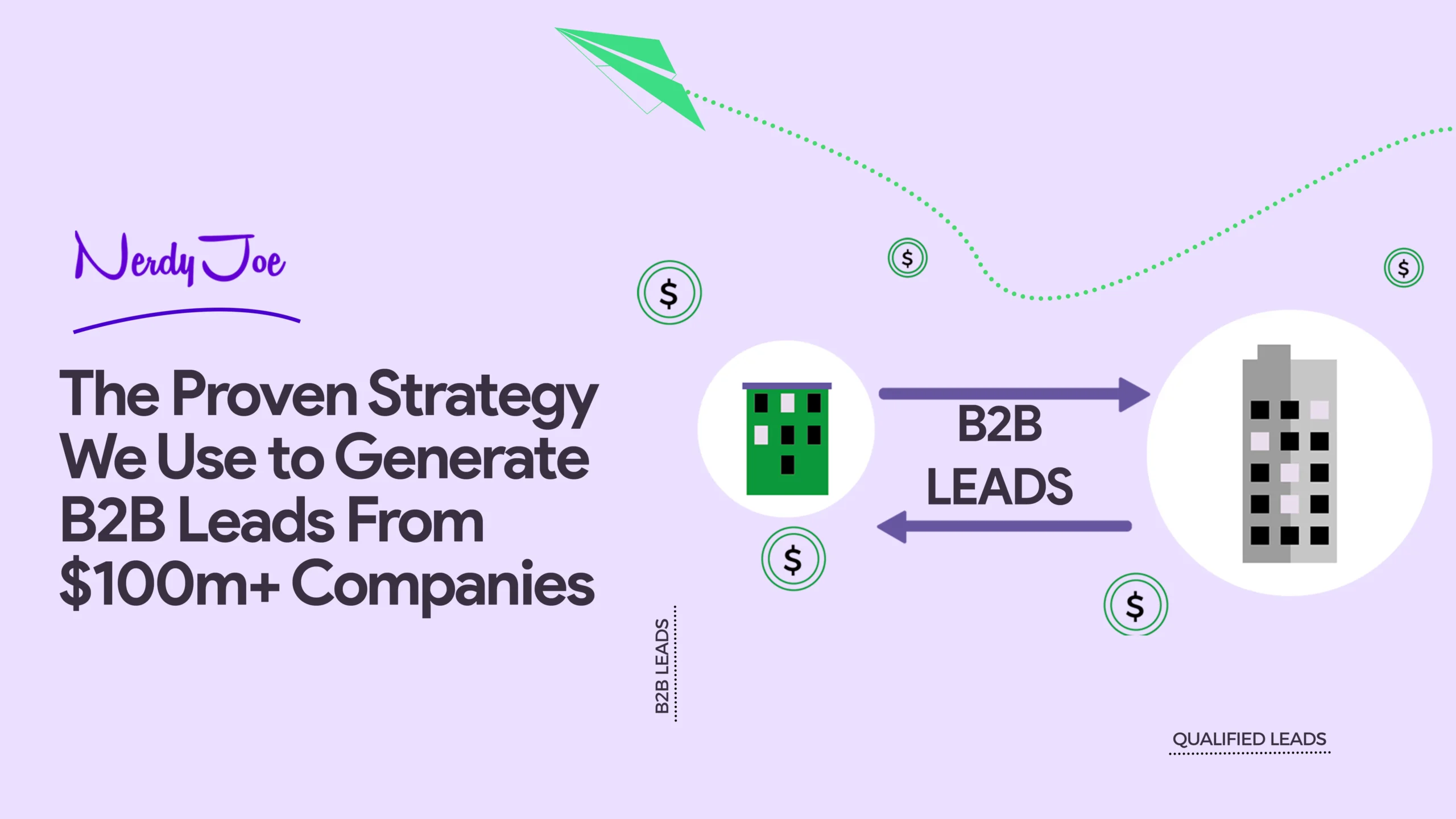
![How to Generate B2B Leads With Cold Outreach [Case Study]](https://nerdyjoe.com/wp-content/uploads/2024/06/1669218674-artboard-1-copie-4-3x-1-scaled.webp)
